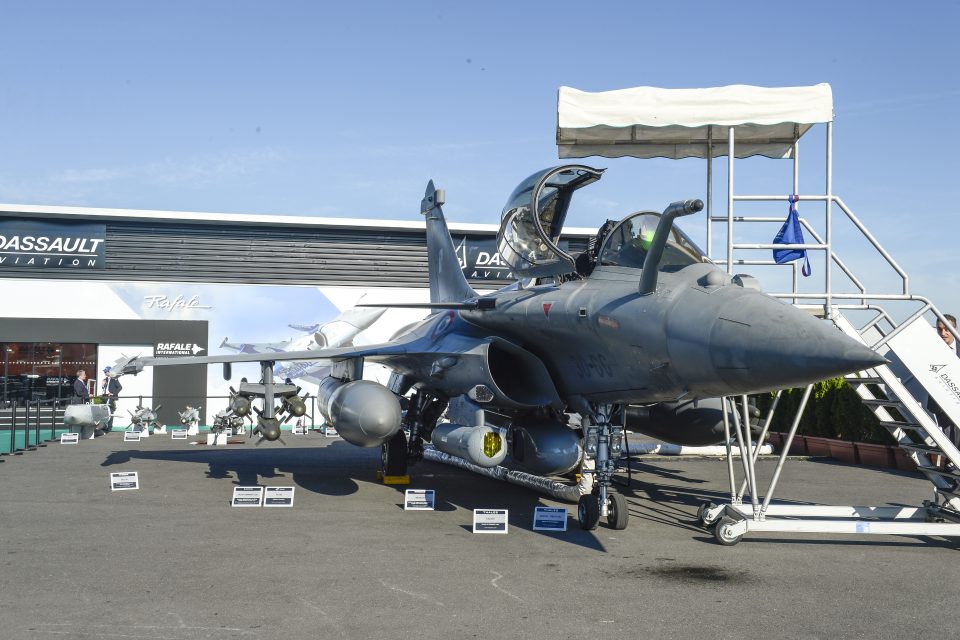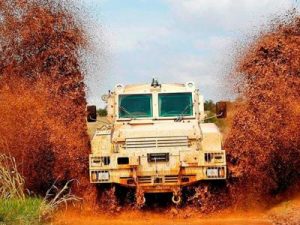2017-06-18 Recently, the RAAF just completed sortie 1000 in its Middle East mission.
It has done so with a 93% dispatch rate and has provided approximately 10% of all coalition fuel in the overall coalition air operations.
They have done this by flying one aircraft!
As the USAF is still waiting for its first operational Boeing tanker, the Aussies are head towards shaping their Tanker 2.0 concepts of operations and capabilities.
RAAF 1000 Sortie with KC-30A in the Middle East Operation from SldInfo.com on Vimeo.
It would make sense for the KC-30A to become the KC-10 replacement if operational realities and coalition performance is important to the DOD acquisition effort.
Or put bluntly, adopting advanced systems from allies makes a great deal of sense whether they be Wedgetail, KC-30As, SAMDIS underwater combat systems, MBDA Meteor missiles, etc.
Ramping up American combat capabilities is more important than simply always developing American; and any kit acquired from abroad is almost always followed by production domestically.
According to the RAAF in piece published on June 15, 2017:
The Air Task Group (ATG) of Operation OKRA, is operating at the request of the Iraqi Government within a US-led international coalition assembled to disrupt and degrade Daesh operations in the Middle East Region (MER).
The ATG comprises six F/A-18F Super Hornet fighter aircraft, an E-7A Wedgetail airborne command and control aircraft, and a KC-30A Multi-Role Tanker Transport air-to-air refuelling aircraft.
Additionally, the ATG has personnel working in the Combined Air and Space Operations Centre, and embedded with the ‘Kingpin’ US tactical Command and Control Unit.
The ATG is directly supported by elements of Operation ACCORDION including the Theatre Communications Group, Air Mobility Task Group, and the Expeditionary Airbase Operations Unit, whose mission is to provide airbase and aviation operational support to sustain air operations in the MER.
There are up to 300 personnel deployed at any one time to the Air Task Group, with an additional 100 personnel deployed in direct support of Operation OKRA.
Australian Department of Defence
June 15, 2017
And with regard to Tanker 2.0, earlier we published the following:
2017-04-11 By Robbin Laird
During my latest visit to Australia, I had a chance to discuss the way ahead for the KC-30A with the two senior operators involved with the program and its evolving capability.
We met at Amberley Airbase where the KC-30As and C-17s are based. Air Commodore Richard Lennon is the head of the Air Mobility Group and with Group Captain Adam Williams, the officer commanding 86th Wing as well as the CO of the 33rd Squadron (KC-30A).
Last year, I published an interview with the head of the tanker program at Airbus.
And in that piece underscored that having digested the operational fundamentals with the tanker, the tanker program was now moving on to the next phase, which I have called Tanker 2.0.
The baseline tanker is fully functional; now what other capabilities can be added to it as it moves beyond being a gas station in the sky?
Also, since I was last here, the Ministry of Defence has signed a new partnership to shape the way ahead for Tanker 2.0.
This agreement was announced at this year’s Avalon Airshow.
In an article published on March 18, 2017, we highlighted the new partnership agreement.
The Aussies have also signed an agreement with Airbus Defence and Space to partner in shaping what one might call Tanker 2.0, or the smart tanker.
The tanker is a mature military product operated globally and now Australia is laying the foundation for the next transition, to shape new innovations through automation and linkages to shape the smart tanker.
According to a press release by Airbus Defence and Space:
Melbourne, 2 March 2016: The Royal Australian Air Force (RAAF) and Airbus today signed a research agreement to further develop the RAAF KC-30A’s capabilities.
The agreement strengthens the industrial partnership between Airbus and Australia’s defence force, and will help to define the evolution of the KC-30A fleet as it reaches operational maturity and expand its capabilities.
This will result in the KC-30A’s core transport and refuelling capabilities supporting the RAAF’s transformation into a fully integrated force, capable of tackling complex contemporary defence and security challenges.
The agreement’s first milestone is the joint development of the automatic air-to-air refuelling (A3R) concept, which represents a major step forward in in-flight refuelling.
Automating boom refuelling contacts reduces potential risk by minimising operator workload, and increases operational efficiency by cutting the time for each contact. The system requires no additional equipment in the receiver aircraft.
Initial approach and tracking of the receiver is performed manually from the A330 MRTT’s console. Once the image processing system acquires the receiver and the receptacle position, the operator can use the system aid allowing the boom to automatically follow the receptacle. Final extension of the boom’s telescopic beam is manually performed by its operator to make and maintain contact.
Fernando Alonso, Head of Military Aircraft at Airbus Defence and Space said: “The KC-30A offers tremendous combat potential at the heart of the integrated Air Force of the Future, including using the platform as a Communication Node, to maximise air power delivery.”
Air Marshal Leo Davies, Chief of Air Force, RAAF, highlighted the value of ongoing defence and industry collaboration.
“We are delighted to contribute to the research and development of A3R with Airbus to automate the process for boom refuelling without the need for control by our on-board air refuelling operator”, said Air Marshal Davies.
The Royal Australian Air Force and Airbus have successfully performed proximity trials, with physical contacts planned for the near future.
The interview started with Group Captain Williams providing an update since our last meeting at Amberley in August 2016.
“We have been performing very well with our KC-30As globally.
“In the Middle East, using only one tanker on rotation, we just passed our 75th million pound level in delivery of fuel to the combat force in that operational area.
“What does it mean?
“It means that we’ve got some significant experience with this airplane now.”
He added that the clearance process has continued with the F-16s have been added to the planes which KC-30A has been cleared to support.
“When US F-16s were in the theater we tanked them. We have a thriving boom business in the area.”
He added that the experience with the F-16s is a good way to get ready for their support to F-35s.
“They are tanking Japanese based USAF F-16s as well and are getting ready to do so for the Singapore Air Force as well.”
As the KC-30A goes through a steady stream of certifications, the USAF personnel involved in certification at Edwards have now gotten used to how best to certify the software boom system used by the KC-30A.
This meant that the recent B-1 certification program happened quite rapidly as the familiarity with the KC-30A has increased within the USAF.
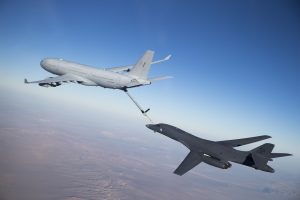 KC-30A and B-1 during certification testing at Edwards AFB. Credit Photo: USAF
KC-30A and B-1 during certification testing at Edwards AFB. Credit Photo: USAF
“We conducted a short certification campaign of 12 flights to get the job done.”
The Aussies are participating in the Coalition Air Refueling Initiative (CARI) as well.
This is a USAF-run program of standardization of tanker operations.
And because the KC-30A is part of a global fleet of Airbus 330MRTT tankers, Aussie certifications are also certifications for other nation’s 330MRTT tankers as well.
This standardization process for tanking is crucial to shape a global coalition capability to support allied tankers worldwide, notably as the combat air force is designed to move to needs rather than to simply be based always at the point of need.
Working with the KC-30A was a first for the USAF for they had not worked with a software driven boom before.
“They went through a lot of test points and a lot of analysis to understand both how the KC-30 worked and how the software boom interacted with the receiver behind it.”
Because the USAF is now familiar with the KC-30A and the workings of its software-driven boom, the certification process for other aircraft can be shortened considerably.
Air Commodore Lennon added: “The test community has done a fantastic job at really narrowing down the requirements for a software driven boom, and when we make software changes to the boom we don’t want to be retesting every single aircraft again.
“We want to be able to assess those changes against the baseline that we already have and get on with it.”
The software enabled boom poses challenges as well to managing the way ahead for coalition air forces, given the need for managing the intellectual property of the builders of the two aircraft which will have software enabled booms, Airbus on operational tankers now and soon Boeing with its KC-46A.
As Air Commodore Lennon put it: “Every tanker needs to be capable of tanking every receiver. That is the goal.”
“We do not want to have IP differences get in the way of that requirement.
“We need to shape a good level of data sharing without compromising the IP of the two companies.
“Software driven booms designed by dissimilar companies will respond differently to diverse operational situations and we need to narrow this difference for operational stability.
“We need as operators to set standards so different manufacturers can design their booms to respond in a predictable, pre-determined manner.
“Designers might shape different approaches via their software, so long as they deliver that common result.
“Legacy booms are mechanical and the operator drove the boom in accordance with standard procedures.
“The boom operator positions the boom to a common point in accordance with common procedures.
“We want to make sure that the software can achieve the same outcome.
“This is especially important where new booms have software driven functions such as automatic disconnect.
“It is important for the receiver to know what the boom will do next.”
We then discussed the progress in the automatic boom being worked with Airbus.
According to Air Commodore Lennon: “The best way to think about the new boom capability is that it is an automatic boom similar to how autopilot works in the cockpit. The automatic pilot simplifies the pilot load, but the pilot is still there and can override the autopilot in case of need.
There will always be an operator monitoring what’s going on with the boom, deciding what the boom should do, and when it should do it, but now he can let the boom do all the work of positioning and marrying up with the receiver.”
The KC-30A is a refuelable aircraft so with a fatigue reducing automatic boom, the crew can stay airborne for longer to generate additional operational impact and enhanced sortie generation effects.
Air Commodore Lennon saw other potential impacts on operations as well from having an automatic boom.
“If it can anticipate and react to movements of the receiver aircraft faster than the boom operator can, then you end up with faster contacts. You also potentially end up with more consistent contacts when the turbulence level increases, in cloud or when night falls.”
We then discussed the partnership with Airbus through which the RAAF is working the new capabilities for the now fully operational KC-30A baseline aircraft or Tanker 1.0.
Air Commodore Lennon felt that “the agreement signed at Avalon represents a significant maturing of the relationship with Airbus.
“It was interesting that we declared final operating capability for KC-30A at Avalon and then within five minutes we were signing a cooperative agreement to take the capabilities of the tanker to the next level.”
Both Lennon and Williams saw the maturation of the relationship with Airbus as critical when moving towards Tanker 2.0.
“I think they’ve definitely turned a corner in terms of maturity. They are not just trying to sell airplanes anymore but operating as a global fleet steward.
“They are offering us a menu of choices for how we might modify the aircraft going forward, rather than selling us a single solution.”
We then returned to a topic which I had discussed with the Group Captain last August, namely the advantages of the pairing of the C-17 with the KC-30A.
The Aussies given the vast areas they cover use their tanker as a fully loaded fuel asset and given its significant fuel load maximises the number of receivers that can be deployed over long distances.
This means though that they want to fly with a C-17 to carry the kit, people and support equipment that is displaced by fuel on the KC-30.
Hence the importance of the pairing.
According to Williams there are two clear recent examples of how this works.
“We brought F-35s and Growlers to the Avalon air show and we did so by supporting them with a KC-30A and C-17 pairing. For long range operations, the pairing works very well for us.”
In contrast, for operations within Australia the tanker can be used not only to fuel but to lift personnel and cargo as well in many operational settings.
Editor’s Note: in December 6, 2016 story published by the USAF 88th Wing, the CARI validation process with the KC-30A and the B-1 was described.
WRIGHT-PATTERSON AIR FORCE BASE, Ohio – Officials in the Air Force Life Cycle Management Center’s Tanker Directorate, headquartered at Wright-Patterson Air Force Base recently announced the successful completion of refueling tests between the Australian Air Force’s KC-30 and the U.S. Air Force’s B-1B as part of the Coalition Aerial Refueling Initiative (CARI).
From Oct. 25 – Nov. 9 the coalition team executed seven sorties totaling 27.4 flight test hours, encompassing 185 contacts and offloading a total of 275,150 pounds of fuel. The testing was completed two weeks ahead of schedule.
“CARI is significant because it fosters international cooperation by leveraging the combined assets of our coalition partners,” said John Slye, director of engineering for the Tanker Directorate.
“This is not just a U.S. Air Force mission, but a global mission because of the reliance on aerial refueling as a force extender, force enabler, and force multiplier.
“The results of CARI offer a significant return on investment; providing aircraft refueling services and increasing tanker availability while improving the interoperability of the United States and its coalition partners.”
The slideshow highlights the KC-30A at the recent Avalon airshow and the signing of the cooperative agreement between the RAAF and Airbus Defence and Space and is credited to the Australian Ministry of Defence.
For the interview with Airbus Defence and Space regarding Tanker 2.0, see the following:



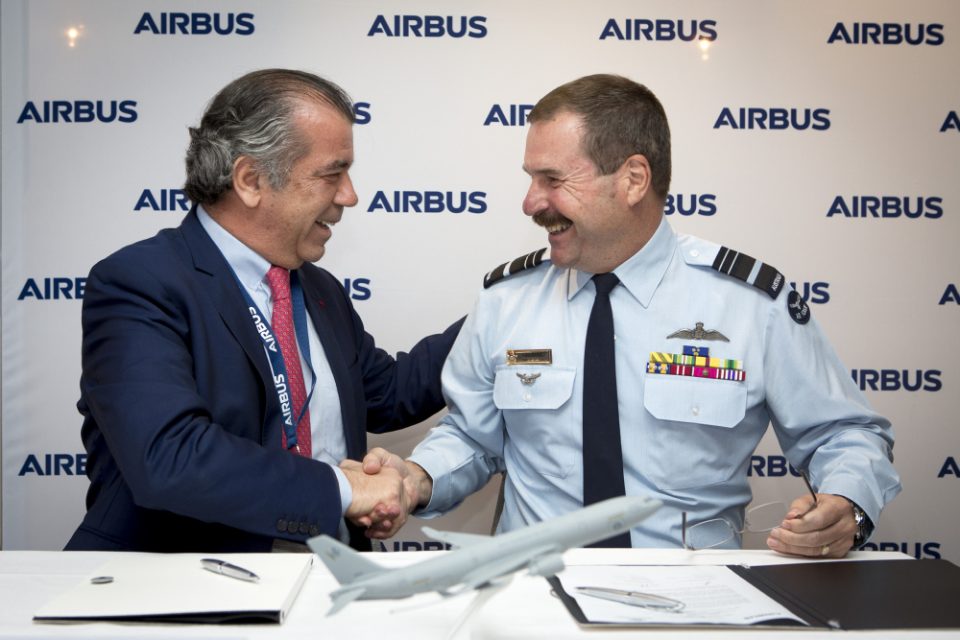
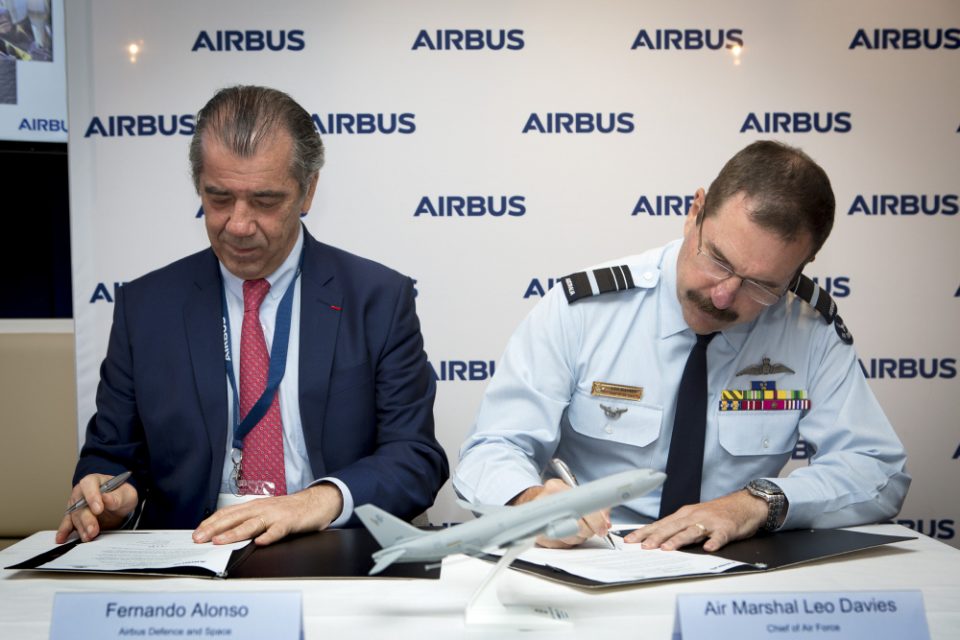
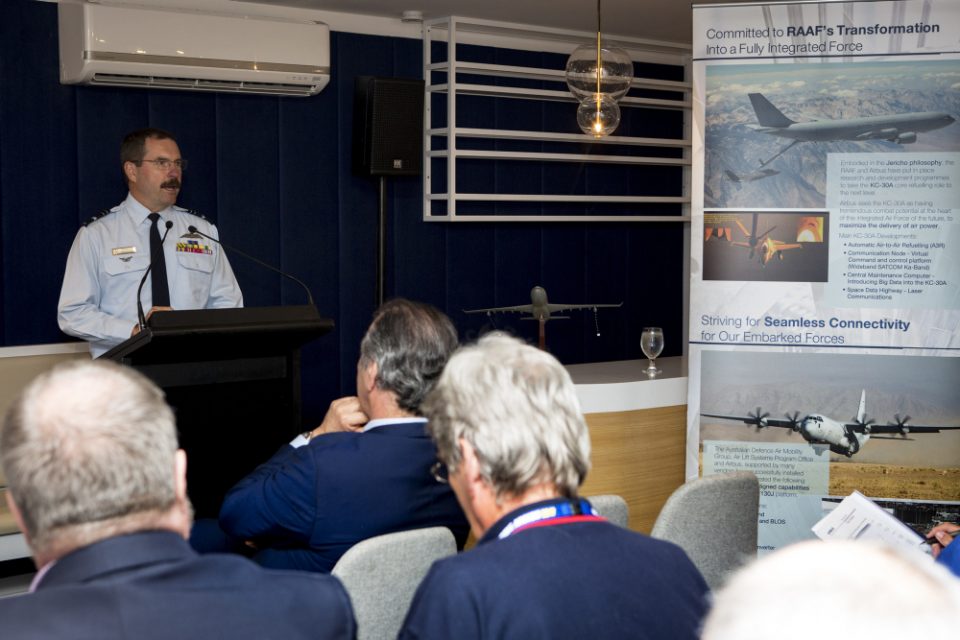
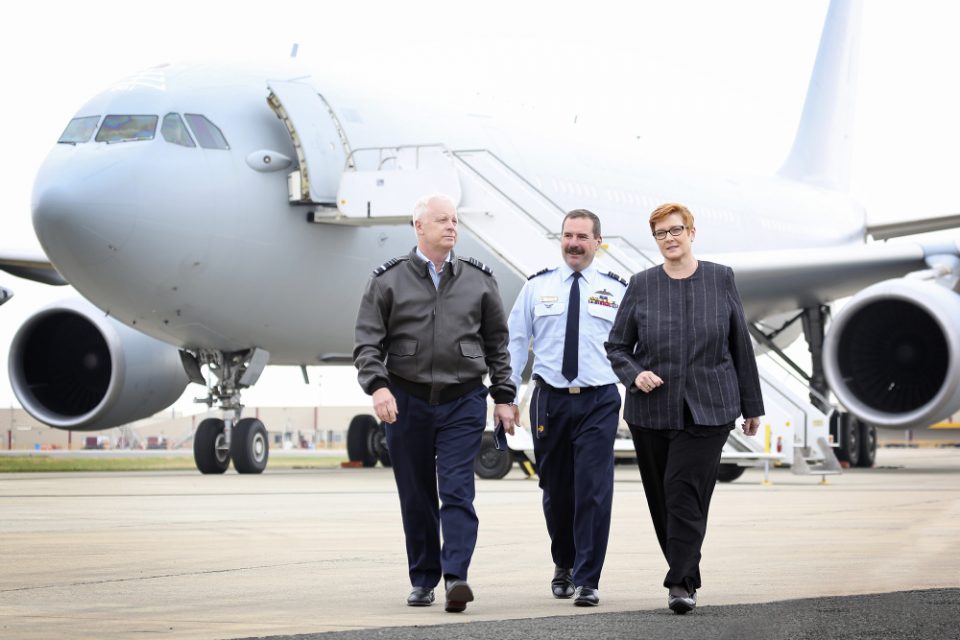
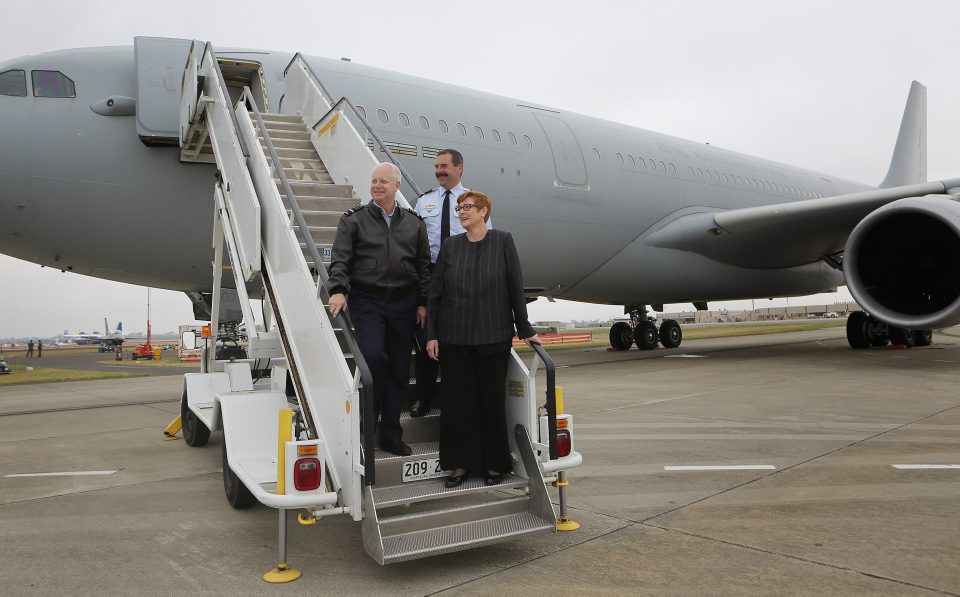

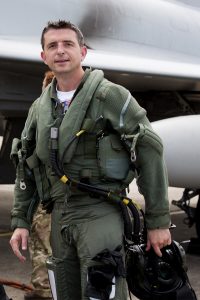 Image Shows: RAF Lossiemouth’s Station Commander, Group Captain Paul Godfrey returning from flying on Ex Bersama Lima 16. Credit: RAF
Image Shows: RAF Lossiemouth’s Station Commander, Group Captain Paul Godfrey returning from flying on Ex Bersama Lima 16. Credit: RAF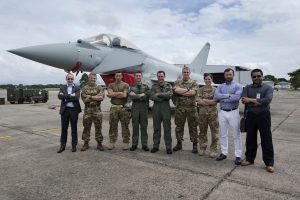 Image Shows: RAF Lossiemouths Station Commander, Group Captain Paul Godfrey (third from left) and Officer Commanding 1(F) Sqn, Wing Commander Mike Sutton (forth from left) stood with personnel from 1(F) Sqn and Malaysian Press Journalists while taking part in Ex Bersama Lima 16. Credit: RAF
Image Shows: RAF Lossiemouths Station Commander, Group Captain Paul Godfrey (third from left) and Officer Commanding 1(F) Sqn, Wing Commander Mike Sutton (forth from left) stood with personnel from 1(F) Sqn and Malaysian Press Journalists while taking part in Ex Bersama Lima 16. Credit: RAF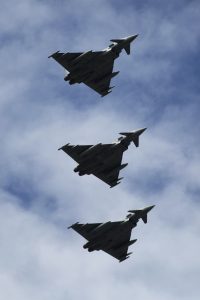 Image Shows: Three Typhoon Aircraft from 1(F) Sqn in the air while taking part in Ex Bersama Lima 16. Credit: RAF
Image Shows: Three Typhoon Aircraft from 1(F) Sqn in the air while taking part in Ex Bersama Lima 16. Credit: RAF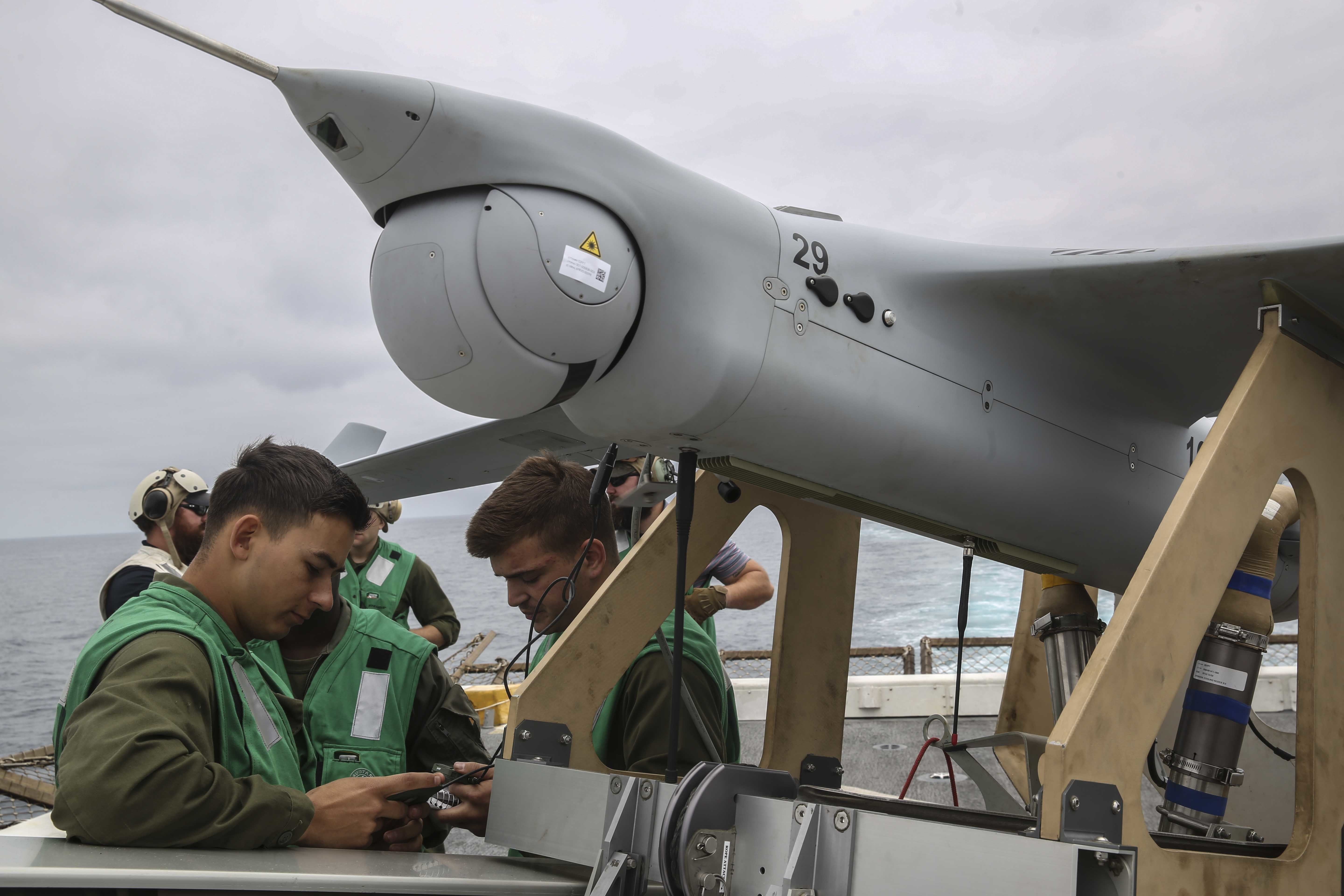
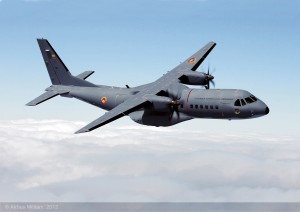 Colombian Air Force C-295 in flight. Credit Photo: Airbus Military
Colombian Air Force C-295 in flight. Credit Photo: Airbus Military
